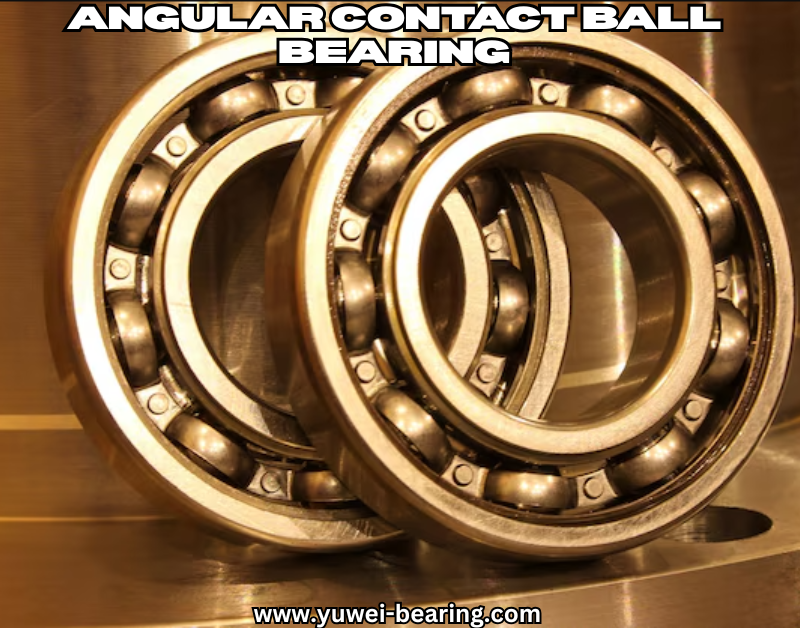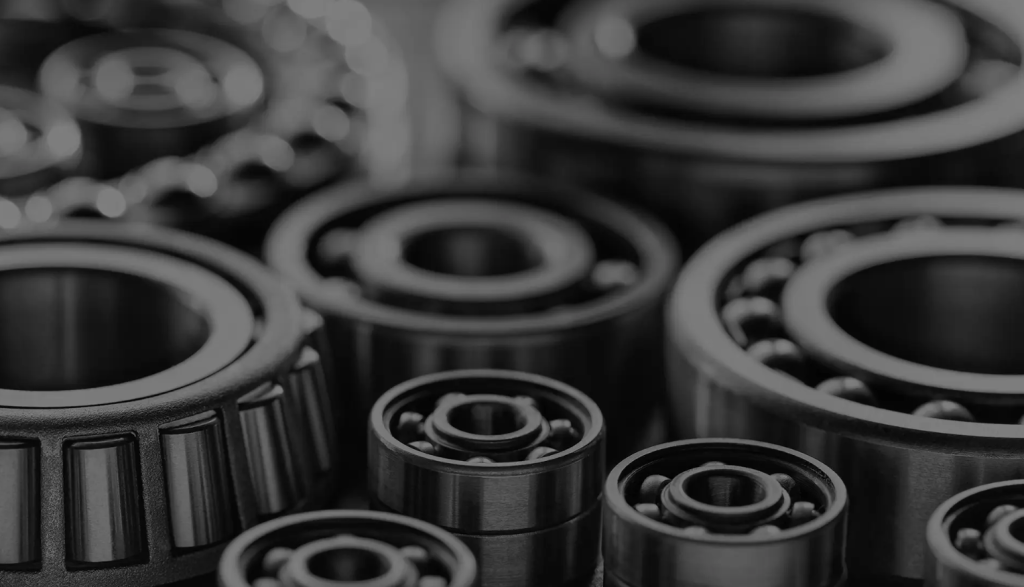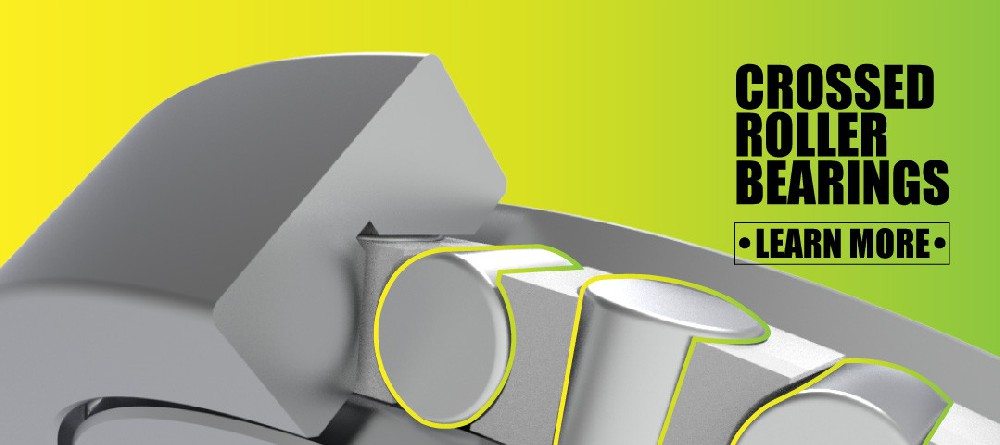In the world of modern machinery, even small details can determine whether a system runs smoothly or fails prematurely. One of the most critical yet often overlooked elements is the contact angle of 角接触球轴承. This simple geometric feature has a profound impact on how bearings handle both radial and axial loads, influence rotational speed, and ultimately determine durability.
Choosing the right contact angle is not just a technical decision—it shapes how efficiently forces flow through the bearing, how heat and friction are managed, and how long the bearing will last under continuous operation. From high-speed spindles in machine tools to the precise joints in robotics, the contact angle governs performance, reliability, and stability.
Misjudging this parameter can lead to reduced speed, accelerated wear, and frequent maintenance, while an optimized angle ensures smooth, consistent operation. For engineers, maintenance teams, and machinery designers, understanding the contact angle is essential to achieving both efficiency and longevity.
Angular contact ball bearing effect of contact angle on speed and durability
In this guide, we will explain how the contact angle affects speed, durability, and overall performance of angular contact ball bearings.

Understanding Angular Contact Ball Bearing
An angular-contact-ball-bearing is designed with a raceway geometry that allows the balls to make contact at an angle relative to the bearing axis. This is a key difference from standard radial bearings, which handle mainly radial loads. Angular-contact-ball-bearing are built to handle combined loads—radial and axial—making them indispensable in modern machinery. Visit 这里!
Key Features:
- Load Versatility: Can handle radial and axial loads simultaneously.
- High-Speed Capability: Optimized for high RPM applications.
- 精确: Ideal for applications requiring tight tolerances.
The Role of Contact Angle in Bearing Performance
The contact angle defines how the load travels through the bearing. A smaller angle channels more of the load radially, while a larger angle directs it axially. This distinction affects both performance and lifespan.
Impact on Load Distribution:
- Small Contact Angle (15°–25°):
- Load mainly radial
- Higher rotational speed possible
- Less axial stability
- Large Contact Angle (30°–40°):
- Load primarily axial
- Enhanced axial stiffness
- Slight reduction in max speed
Impact on Rotational Speed
The speed capability of angular contact ball bearings is affected by friction, centrifugal force, and heat buildup. The contact angle determines how efficiently these forces are managed.
要点:
- Lower Angles:
- Minimize friction
- Allow smoother rotation
- Suitable for spindles, electric motors
- Higher Angles:
- Increase axial stress
- Generate more internal heat
- Reduce maximum safe RPM
Practical Guide Table:
| 接触角 | Load Focus | Max Speed | Typical Application |
|---|---|---|---|
| 15°–20° | 径向 | 高的 | CNC spindles |
| 25°–30° | Mixed | 中等的 | Small gearboxes |
| 35°–40° | 轴向 | 低的 | Pumps, compressors |
Effect on Durability and Lifespan
Durability depends on how evenly loads are distributed and how efficiently friction is managed. Contact angle has a direct effect on both.
Durability Insights:
- Larger angles spread axial load across the balls, reducing localized wear.
- Smaller angles reduce axial capacity but allow smoother radial rotation.
- Optimized angles prevent premature fatigue, micro-pitting, and surface wear.
Preloading and Contact Angle

Preloading is the practice of applying axial force to a bearing during installation. Contact angle determines how much preload a bearing can safely tolerate.
Preload Guidelines:
- Small Contact Angles:
- Lower preload recommended
- Avoid overheating at high speed
- Large Contact Angles:
- Higher preload tolerated
- Improves stiffness under axial loads
Practical Tip: Always pair the contact angle with preload settings to maintain both speed and durability.
Selecting the Right Contact Angle for Your Application
Choosing the ideal angular-contact-ball-bearing requires careful assessment of operational conditions.
分步指南:
- Analyze Load Types: Determine axial vs radial load ratios.
- Assess Speed Needs: Higher speed favors smaller angles.
- Check Durability Requirements: Axial-heavy applications benefit from larger angles.
- Factor Preload: Adjust preload according to angle and application.
- Consider Installation Space: Ensure the bearing fits without stress on adjacent components.
Lubrication and Heat Management
Even an ideal contact angle cannot overcome poor lubrication. Proper lubrication reduces friction, manages heat, and enhances lifespan.
Lubrication Tips:
- Grease or Oil Selection: Match viscosity to speed and load.
- Maintenance Intervals: Higher speeds require more frequent lubrication checks.
- Temperature Control: Bearings with larger angles generate more heat, needing better thermal management.
Practical Tip Table:
| 接触角 | Lubricant Type | Temperature Consideration | 频率 |
|---|---|---|---|
| 15°–20° | Low-viscosity oil | 缓和 | 每月 |
| 25°–30° | Medium grease | 中等的 | 6 weeks |
| 35°–40° | High-viscosity grease | 高的 | 4 weeks |
Installation Considerations
Proper installation ensures the designed contact angle and load distribution are maintained.
Installation Tips:
- Align the bearing precisely with shaft and housing.
- Avoid excessive axial or radial misalignment.
- Use opposite pairing when required to balance axial loads.
- Check preload and torque specifications during assembly.
Real-World Applications
Angular contact ball bearing with optimized contact angles are found across industries:
- Machine Tools: Small angles allow high-speed, precise rotation.
- Gearboxes: Larger angles manage heavy axial thrust.
- Pumps and Compressors: Bearings handle mixed loads in demanding conditions.
- Robotics: Balanced angles provide stiffness and smooth motion.
FAQs
Q1: What is the optimal contact angle for high-speed spindles?
A1: Typically 15°–20° for minimal friction and maximum RPM.
Q2: Can I use a large contact angle bearing in a high-speed application?
A2: Yes, but speed will be limited, and heat buildup may increase.
Q3: How does preload affect bearing life?
A3: Correct preload improves stiffness and load distribution; excessive preload shortens life.
Q4: Do I need special lubrication for large contact angles?
A4: Yes, high-viscosity grease or oil with good thermal stability is recommended.
Q5: How often should angular contact ball bearing be inspected?
A5: Frequency depends on load and speed, typically every 4–8 weeks for industrial machines.

结论
The performance of machinery often depends on precise engineering choices, and few are as critical as the contact angle of 角接触球轴承. This small yet powerful feature dictates how loads are distributed, how friction and heat develop, and how long a bearing can reliably operate under stress. Selecting the right contact angle is a balancing act: smaller angles favor high-speed rotation and smooth radial load handling, while larger angles enhance axial load support and improve durability under thrust conditions.
When combined with proper preload, accurate installation, and effective lubrication, the correct contact angle ensures that bearings operate efficiently, last longer, and maintain machine precision. Ignoring this factor can lead to early wear, reduced speed capacity, and unexpected downtime. Understanding the dynamics of contact angle equips engineers and maintenance teams to make informed decisions, optimize performance, and extend the lifespan of critical machinery.
By mastering these principles, you can ensure that every rotation, every load, and every operation works smoothly, efficiently, and reliably, safeguarding both performance and longevity.

